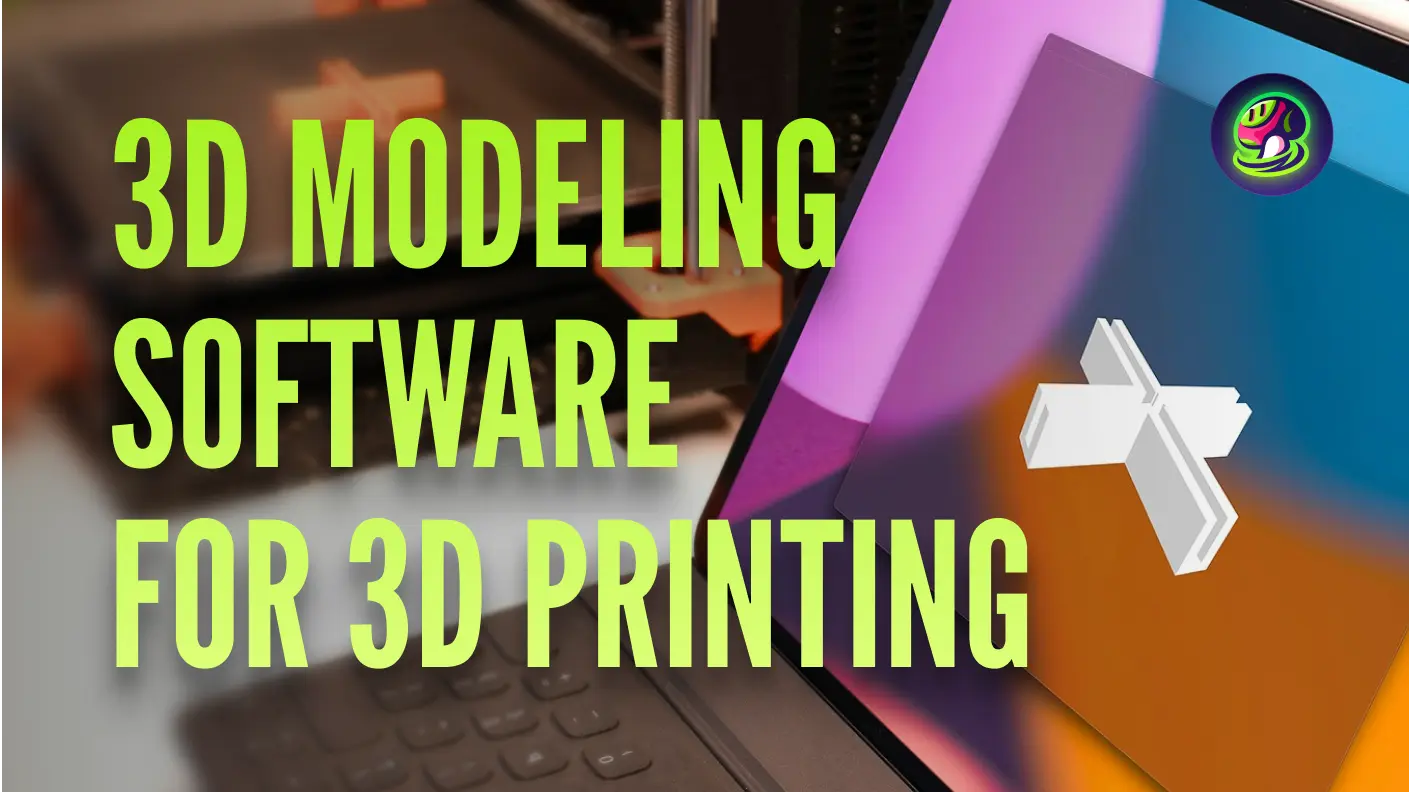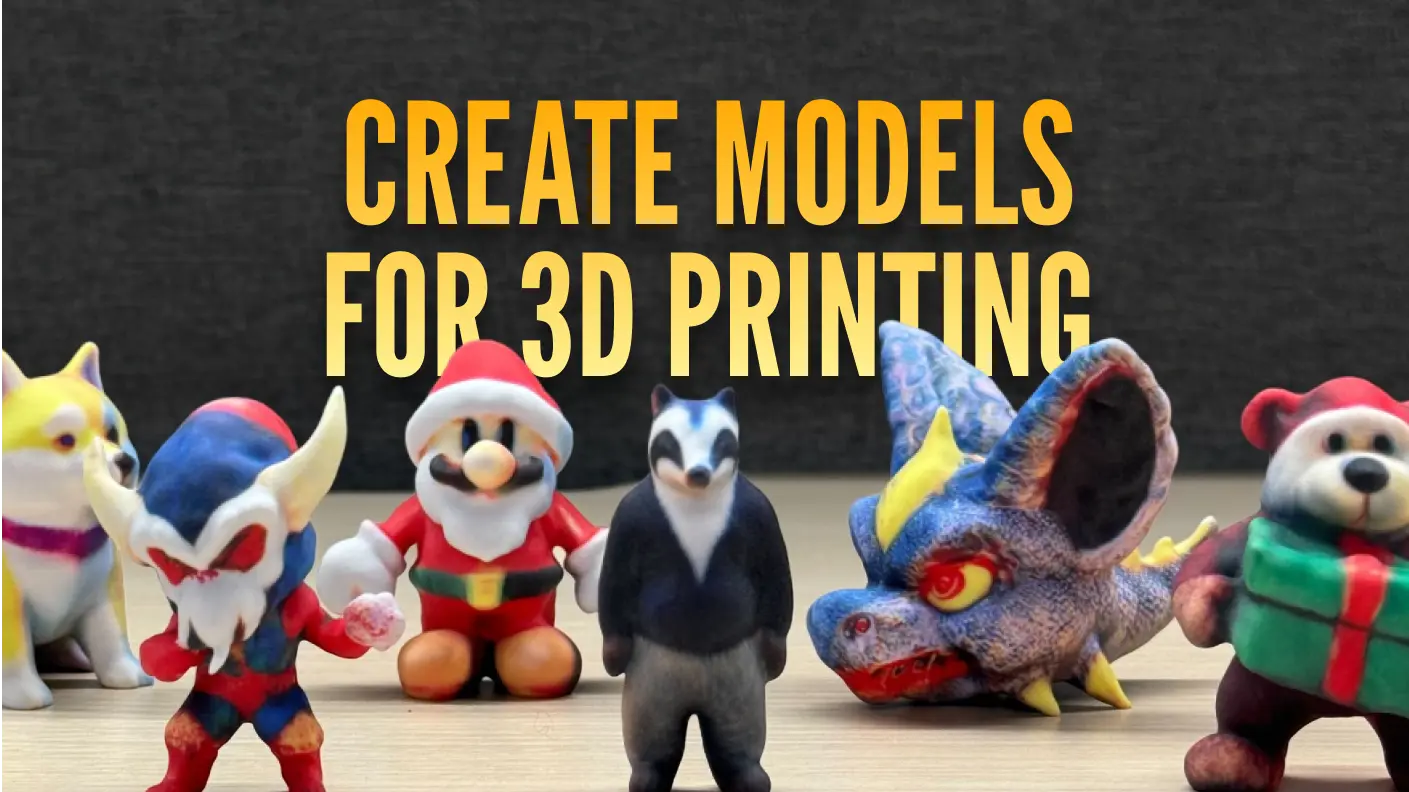Navigating the world of 3D printing requires the right tools, and choosing the best CAD software is crucial for achieving optimal results. Whether you're a beginner or a seasoned professional, understanding the features and capabilities of different software can significantly impact your workflow and final output.
In this guide, we'll explore the best CAD software for 3D printing in 2025, focusing on ease of use, compatibility, and functionality. From 3D modeling software to free 3D design software, we'll cover a range of tools to help you make an informed decision. Let's dive into the best options available for creators like you.
What is the Best CAD Software for 3D Printing?
CAD software is essential for creating precise 3D models, serving as the bridge between design and physical creation. Selecting the right software ensures seamless integration with 3D printers, enhancing the quality and accuracy of printed models.
For beginners to consider ease of use, TinkerCAD, SketchUp, and Meshy might be the best 3D CAD software for 3D Printing. For professionals who want to use a range of capabilities offered, Choosing Blender, AutoCAD, and Fusion 360 is ideal.
FreeCAD
![]()
FreeCAD is a free, open-source 3D design software used for creating and editing models in various fields like engineering, architecture, and product design. It's parametric, meaning you can easily adjust designs by changing their parameters, making it very flexible for tweaking and improving models.
Along with traditional CAD features, FreeCAD also supports building information modeling (BIM), which is useful for architectural projects, and includes tools for structural analysis using finite element methods (FEA). This makes it a great choice for anyone needing detailed and accurate designs.
TinkerCAD
![]()
TinkerCAD is an online 3D design and printing app developed by Autodesk, and it is also the best CAD software for 3D printing. It is primarily intended for beginners and amateurs. Its user-friendly interface enables you to easily build simple 3D graphics. TinkerCAD is particularly effective for designing models for 3D printing and prototyping.
Tinkercad, while lacking the sophisticated functionality found in more professional software, is an excellent starting point for anyone new to 3D modeling. It also includes a selection of pre-made shapes and objects that may be changed to fit your designs.
Fusion 360
![]()
Fusion 360 is a cloud-based 3D CAD, CAM, and CAE software developed by Autodesk. Its applications include product design, engineering, and simulation, making it a good choice for industrial design specialists. Fusion 360 allows for real-time collaboration, making it ideal for teams collaborating on design projects.
It is cloud-based, allowing you to access projects from anywhere and collaborate effortlessly. Its ability to handle design and simulation in a single package makes it an excellent alternative for those wishing to streamline their workflow. It includes advanced modeling features such as parametric design, direct modeling, and sculpting, which enable you to build highly detailed and functional designs.
Meshy
![]()
Meshy is an innovative platform that provides free, high-quality 3D models as well as cutting-edge AI tools for game developers and others. Its prominent features include text to 3D and image to 3D conversion, making it an ideal resource for individuals looking to make their 3D gaming models.
Meshy offers a range of free 3D models, from fantasy creatures to modern-day objects, for different projects. Meshy makes 3D game modeling simpler and quicker. If you can not find a suitable model in the community, create one yourself with a picture or a line of words. It also provides texturing and animation to bring your models to life.
Blender
![]()
Blender is a free and open-source 3D graphics software available for Windows, macOS, Linux, and other operating systems. It's used for creating animated films, visual effects, motion graphics, 3D-printed models, interactive 3D applications, and VR experiences. Blender is also widely used in video game development, offering powerful tools for modeling, texturing, and animation.
It's a free open-source software, so there's a lot of documentation and community support. There are also a lot of features and tools to help you create 3D animations. Although Blender doesn't have a user-friendly UI, it is still the best free CAD software for 3D printing.
SketchUp
![]()
SketchUp is the best 3D CAD software for 3D printing and is primarily used in architecture and interior design. It allows you to create and manipulate 3D models with ease. It offers a free web-based version and three paid subscription options for full access to the software on Windows and macOS. SketchUp is known for its user-friendly interface and is popular among professionals and hobbyists alike.
SketchUp is commonly used by architects, engineers, and designers to construct 3D models of buildings, interiors, and landscapes. It also accepts plugins and third-party applications to expand its capability, making it appropriate for both casual and professional use.
AutoCAD
![]()
AutoCAD is a powerful and widely-used CAD software for 3D printing developed by Autodesk. It is primarily used for creating 2D and 3D drawings and models in fields such as architecture, engineering, construction, and manufacturing. It allows you to create precise 2D technical drawings, such as floor plans, schematics, and blueprints. Moreover, you can also create and visualize 3D models, providing a more realistic representation of designs.
SolidWorks
![]()
SolidWorks is the best CAD software for 3D printing and creating 3D models of parts and assemblies. It's commonly used in engineering and product design to create detailed, precise models for manufacturing. It includes the resources you need to complete your project, from straightforward CAD processes and 3D modeling to cloud technologies that make day-to-day collaboration easier.
SolidWorks offers tools for simulation, rendering, and analysis, allowing you to test how a design will perform under real-world conditions before it's made. It's widely used in industries like aerospace, automotive, and consumer electronics.
Conclusion
Exploring the diverse landscape of the best CAD software for 3D printing shines a light on a wealth of options tailored to various needs and expertise levels. By understanding the unique strengths and limitations of each option, you can select a tool that aligns with your project goals and personal preferences. Embrace these powerful tools and elevate your 3D printing projects to new heights.


